These airports in South Korea promise a seamless travel experience with modern facilities and top-notch services. From the world-class Incheon International Airport, known for its efficiency and luxury, to Gimpo International Airport, offering quick access to Seoul, each airport ensures convenience for travelers. Jeju International Airport connects visitors to the stunning Jeju Island, while Busan’s Gimhae International Airport serves as a key gateway to southern South Korea. Whether arriving for business or leisure, South Korea’s airports set the stage for an unforgettable journey!
10 Airports In South Korea Worth Flying Via
Here are 10 of South Korea’s finest airports, offering top-tier facilities, seamless travel experiences, and world-class services for an unforgettable journey.
1. Incheon International Airport
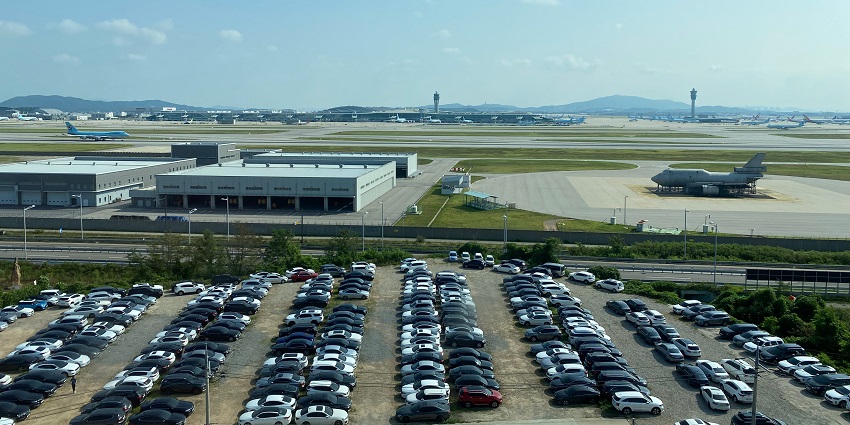
Photo: Sgroey / Wikimedia Commons
Incheon International Airport, located approximately 48 kilometers west of Seoul, is South Korea’s primary international gateway. Opened in 2001, it has consistently been ranked among the world’s best airports for its exceptional service and facilities. The airport features two main terminals and a satellite concourse, efficiently handling over 70 million passengers annually. Travelers can enjoy a variety of amenities, including cultural performances, extensive shopping options, and diverse dining establishments.
Airport Code: ICN
Nearest Railway Station: Incheon International Airport Station / AREX Line
Best Hotels To Stay: Grand Hyatt Incheon is a short drive from the terminals, providing luxury accommodations
2. Gimpo International Airport
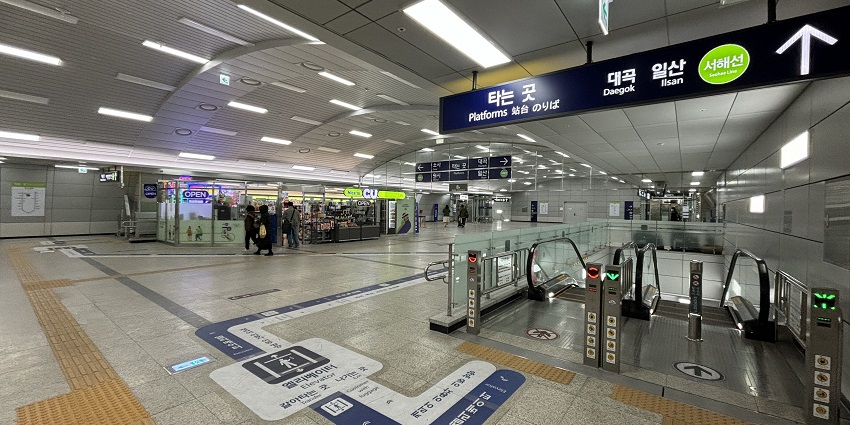
Photo: MNXANL / Wikimedia Commons
Gimpo International Airport, situated closer to Seoul’s city center, primarily handles domestic flights and select international routes to destinations like Tokyo and Shanghai. Before the opening of Incheon Airport, it served as Seoul’s main international gateway. The airport comprises two runways and offers various passenger amenities, including duty-free shops, restaurants, and efficient transportation links to downtown Seoul. Its proximity to the city center makes it a convenient choice for travelers as one of the big airports in South Korea to fly via.
Airport Code: GMP
Nearest Railway Station: Gimpo International Airport Station / AREX and Seoul Subway Line 5
Best Hotels To Stay: Lotte City Hotel Gimpo Airport is directly connected to the terminal, offering convenience for travelers
3. Jeju International Airport
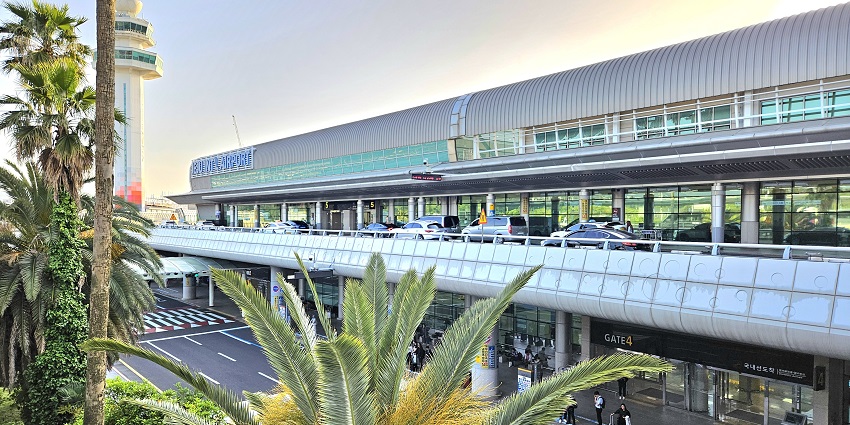
Photo: Kimhs5400 / Wikimedia Commons
Jeju International Airport is the main gateway to Jeju Island, South Korea’s largest island and a renowned tourist destination. The airport handles a significant volume of domestic flights, especially from Seoul, and offers international routes to countries like Japan and China. Its proximity to downtown Jeju City ensures quick access to hotels, restaurants, and attractions. Facilities include various dining options, shopping areas, and efficient ground transportation services.
Airport Code: CJU
Nearest Railway Station: No railway station; accessible via bus and taxi services
Best Hotels To Stay: Hotel Nanta Jeju is a short drive from the airport, offering comfortable accommodations
4. Gimhae International Airport
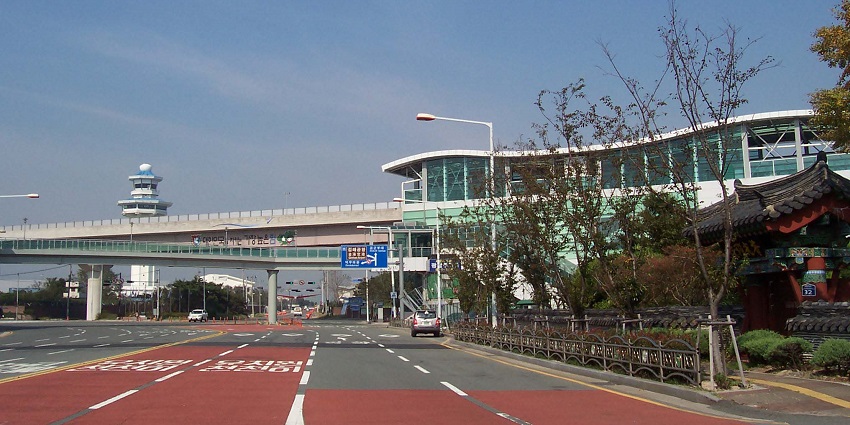
Gimhae International Airport serves Busan, South Korea’s second-largest city. It operates both domestic and international flights, connecting travelers to destinations across Asia. The airport features two terminals – domestic and international – with amenities such as duty-free shops, restaurants, and currency exchange services. Efficient transportation options, including buses and the Busan – Gimhae Light Rail Transit, link the airport to various parts of Busan. This is one of the major airports in South Korea worth experiencing flying via.
Airport Code: PUS
Nearest Railway Station: Busan – Gimhae Light Rail Transit / BGL connects to the airport
Best Hotels To Stay: Air Sky Hotel is located close to the airport, providing modern amenities
5. Cheongju International Airport
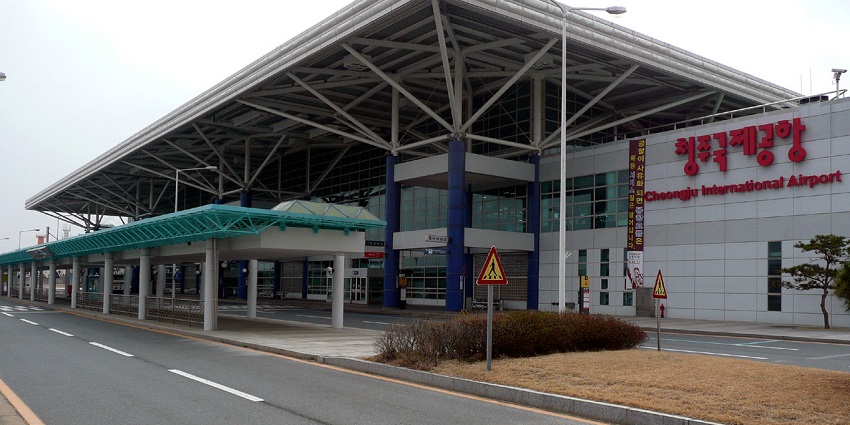
Photo: Sonata / Wikimedia Commons
Cheongju International Airport serves as a key transportation hub in central South Korea, providing both domestic and international flight services. It plays a crucial role in connecting travelers to cities like Seoul, Daejeon, and Chungcheongbuk-do. Opened in 1997, the airport is also used by the Republic of Korea Air Force. It offers direct flights to China, Taiwan, Vietnam, and Japan, making it an essential regional gateway.
Airport Code: CJJ
Nearest Railway Station: Cheongju Airport Station / Chungbuk Line
Best Hotels To Stay: Grand Plaza Cheongju Hotel offers comfortable accommodations a short drive from the airport
6. Ulsan Airport
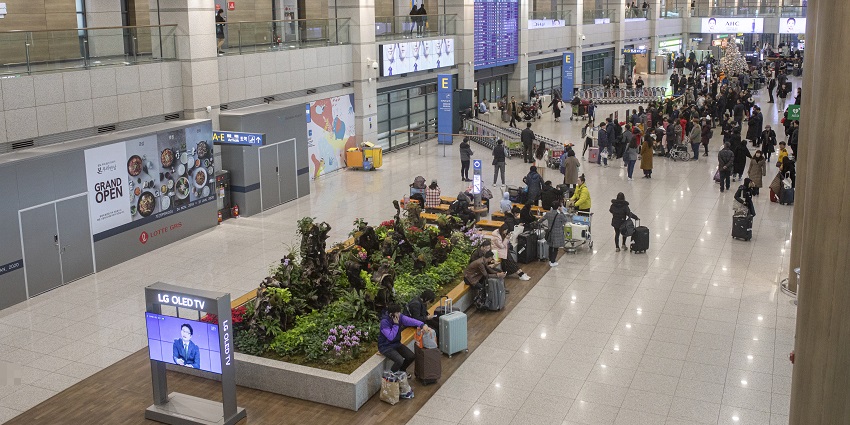
Photo: Arne Müseler / Wikimedia Commons / Image For Representation Only
Ulsan Airport primarily handles domestic flights, connecting the industrial city of Ulsan to Seoul and Jeju Island. The airport is crucial for business travelers, as Ulsan is a major hub for industries like shipbuilding, petrochemicals, and automotive manufacturing. Opened in 1970, it is a compact yet efficient airport with a single terminal for passenger flights. Travelers can enjoy a streamlined check-in process and fast security clearance due to lower traffic volumes compared to larger international airports.
Airport Code: USN
Nearest Railway Station: Ulsan Station / KTX is accessible via bus or taxi
Best Hotels To Stay: Lotte Hotel Ulsan provides luxury accommodations in the city center
7. Daegu International Airport
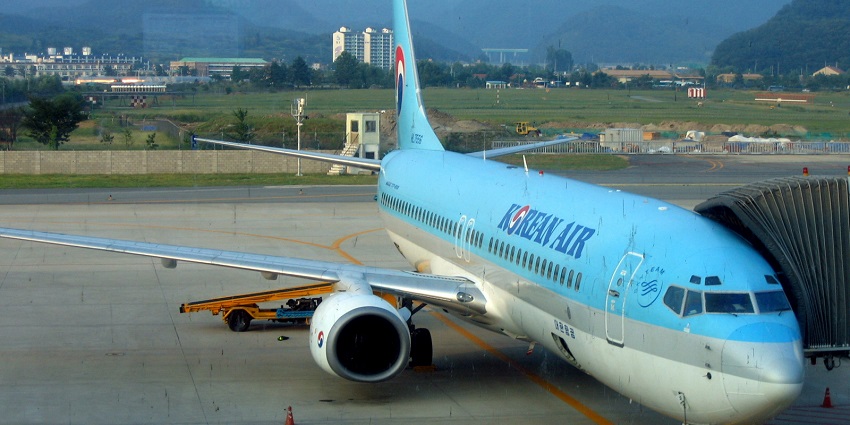
Photo: Thorfinn Stainforth / Wikimedia Commons
Daegu International Airport is a key transportation hub for South Korea’s fourth largest city. It mainly serves domestic flights but also offers limited international routes to Japan, China, and Southeast Asia. Originally built as a military airfield, the airport now features a modern passenger terminal that caters to over 4 million travelers annually. Daegu is known for its vibrant textile and fashion industries, making the airport essential for both business and leisure travelers.
Airport Code: TAE
Nearest Railway Station: Dongdaegu Station / KTX is a short drive away.
Best Hotels To Stay: Hotel Inter-Burgo Daegu offers comfortable accommodations close to the airport
8. Yeosu Airport
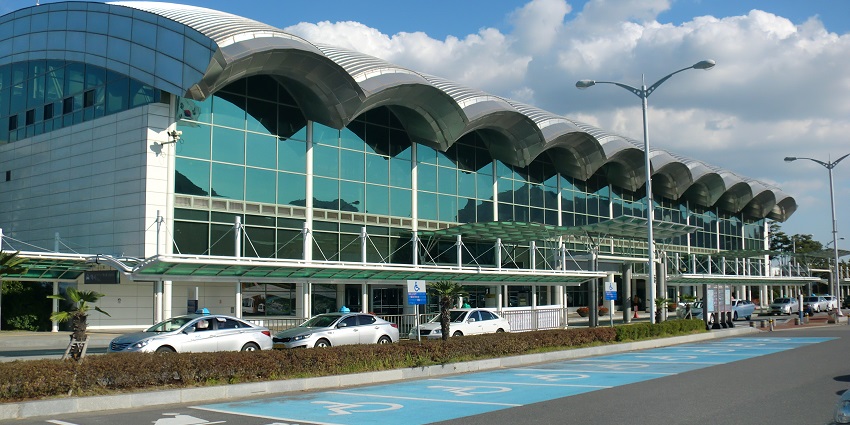
Photo: hyolee2 / Wikimedia Commons
Yeosu Airport is a small but vital gateway to South Korea’s southern coastal region. It primarily serves domestic flights, with connections to Seoul and Jeju Island. The airport is a key entry point for visitors heading to Yeosu’s famous maritime attractions, including the Expo Ocean Park and Odongdo Island. Due to its location on the scenic coastline, the airport offers stunning aerial views upon arrival.
Airport Code: RSU
Nearest Railway Station: Yeosu Expo Station is accessible via bus or taxi
Best Hotels To Stay: Hidden Bay Hotel provides scenic views and comfortable rooms near the coast
9. Sacheon Airport
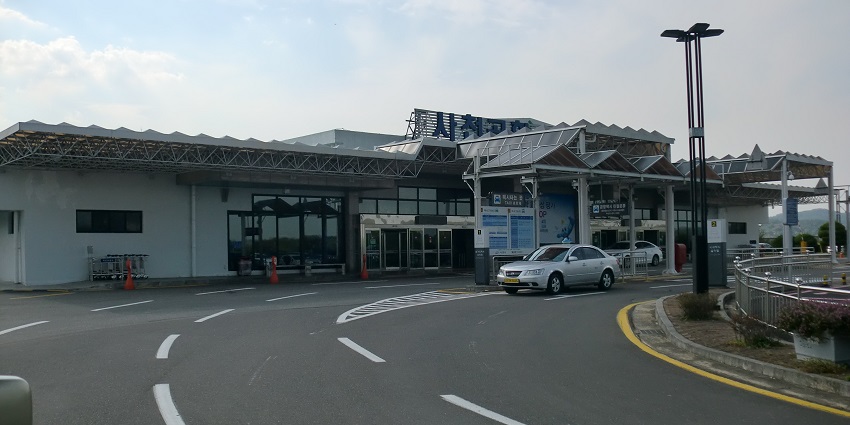
Photo: yolee2 / Wikimedia Commons
Sacheon Airport is a regional airport serving South Gyeongsang Province, mainly operating domestic flights to Seoul. It is located near Jinju and functions as both a civilian and military airfield. The airport offers a stress-free travel experience due to its low passenger volume, making it an excellent option for travelers seeking quick check-ins and minimal congestion. Sacheon is an important city for South Korea’s aerospace industry.
Airport Code: HIN
Nearest Railway Station: Jinju Station, accessible via bus or taxi
Best Hotels To Stay: In Jinju, the Asia Lakeside Hotel provides comfortable accommodations with scenic views, approximately a 30-minute drive from the airport
10. Yangyang International Airport
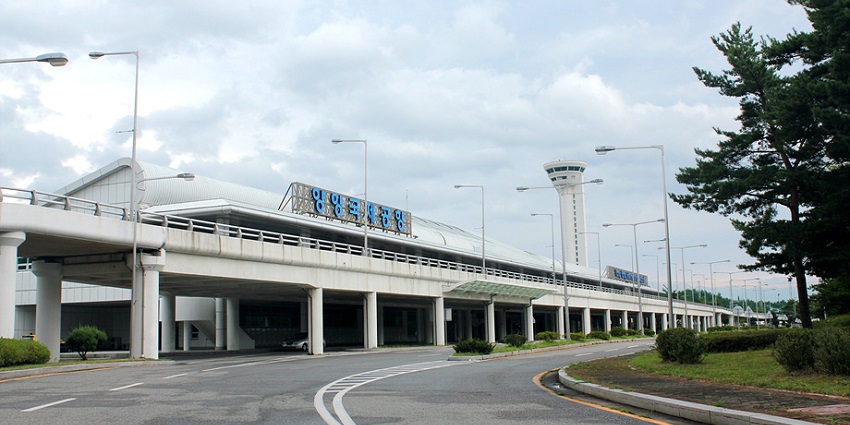
Photo: Jhoyg3 / Wikimedia Commons
Yangyang International Airport serves the northeastern region of South Korea, providing seasonal flights to China and Taiwan, along with domestic routes. It is the closest airport to popular ski resorts such as Alpensia and Yongpyong, making it a prime choice for winter sports enthusiasts. The airport is also near scenic destinations like Seoraksan National Park, attracting nature lovers. Due to its location, Yangyang International Airport is essential for both tourists and local travelers visiting the mountainous Gangwon Province.
Airport Code: YNY
Nearest Railway Station: There is no direct railway station; however, the airport is accessible via bus and taxi services
Best Hotels To Stay: Yangyang International Airport Hotel is located close to the airport, providing convenient accommodations for travelers
South Korea’s airports offer seamless travel experiences, whether you’re landing in bustling Seoul or exploring the country’s scenic coastal regions. From the world-class facilities at Incheon International Airport to the convenience of regional hubs like Ulsan and Yeosu, each airport ensures smooth connectivity. Travelers can enjoy modern amenities, efficient transport links, and nearby attractions. Plan your trip with confidence, knowing that South Korea’s aviation network is designed for comfort. Book your trip today with TripXL!
Cover Photo: Pixabay / Pexels / Image For Representation Only


 WhatsApp
WhatsApp
 Twitter
Twitter









